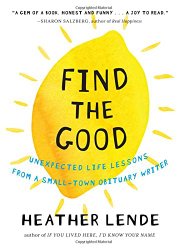More Stories of Mayhem from the Brandon Cemetery
Brandon Sun, June 20, 2016
David McConkey
Stories of mayhem capture our attention. Some of these stories are dramatic reminders of the fragility of life. Some are reminders of the injustice that can float almost unnoticed through history. And some are reminders of how one person can make a difference.Here are more stories of mayhem from the Brandon cemetery.
FIRE, JANUARY 17, 1916
Brandon’s deadliest fire was on Monday, Jan. 17, 1916. The fire at the Syndicate Block, Seventh and Rosser, killed four young employees of the department store Doig, Rankin & Robertson.
The four killed in the fire were all in their twenties. One was the head of the home furnishings department, Clarence Walker. Three were dressmakers: Sadie Eggertson, Jane Marsh and Caroline McCort.
Walker was originally from Halifax, and he is buried in that city.
The three dressmakers are buried in the Brandon cemetery.
Sadie Eggertson is buried in Section 15, Block D, Plot 30.
Jane Marsh is buried close by in Section 15, Block D, Plot 27.
Caroline McCort is buried in Section 2, Block D, Plot 7.
HONOURING THE MEMORY, 1895-1972
The Truth and Reconciliation Commission of Canada has asked all citizens to reflect on the impact of the Indian residential schools. One part of that history: unmarked and untended graves of children who died while attending the schools.
The Brandon Indian Residential School was northwest of the city on the Grand Valley Road. The school was operated by the United Church of Canada and was open from 1895 until 1972. The main building was torn down in 2000. There could be 75 children buried in two cemeteries – and possibly other places – on what were the school grounds.
Alfred Kirkness attended the school in the early 1900s. Later, he worked diligently to honour the memory of the children who died at the school. His efforts were recognized by authors Anne Lindsay, Clare Cook and David Cuthbert in an article last year in the journal of the Manitoba Historical Society.
Kirkness was born in Island Lake, Manitoba in 1902. His mother died when he was a baby. So Kirkness became not just a student at the Brandon Indian Residential School: from the age of two, he grew up there. And for most of the rest of his life, he resided in the Brandon area.
Kirkness was employed for almost 40 years in maintenance at the federal government’s Brandon Experimental Farm. The farm (now the Brandon Research and Development Centre) was right next to the residential school.
From the late 1950s until the early 1970s, Kirkness conducted an energetic one-man campaign to persuade the federal government, the City of Brandon and others to recognize and care for the residential school graves.
In letters to officials in the 1960s, for example, Kirkness criticized City of Brandon construction work at Curran Park. That city park was by the Assiniboine River on former residential school land. “Little by little,” he wrote, the city was destroying the school cemetery there. He described seeing “picnic tables, benches and barbecue stands placed over these students’ graves.”
The Manitoba Historical Society article applauded the work of Kirkness, noting his “carefully constructed arguments, thoughtful writing, and concern for the memory of the children who died at the school.”
“Because of the perseverance of Alfred Kirkness, the two cemeteries associated with the Brandon Indian Residential School were not forgotten,” the article concluded. His campaign is an example “of how the efforts of one person can indeed make a difference.”
Alfred Kirkness died in 1980. He is buried beside his wife Lily in the Brandon cemetery in Section 45, Block B, Plot 15.
* *
*
More From Obituary Guide:
- Writing Your Own Obituary Offers Chance for Reflection
- How to Write a Legacy Letter (Ethical Will)
- A Family History Writing Workshop
- Helping Families "Most Satisfying Work" for Funeral Celebrant
- Be Prepared: Will, Health Care Directive (Living Will), and More
Books You May Find of Interest:
Not Quite What I Was Planning:
Six-Word Memoirs

Writing an Obituary Worth Reading:
A Guide to Writing a Fulfilling Life Review

Find the Good:
Unexpected Life lessons From a Small-Town
Obituary Writer

Having the Last Say:
Capturing Your Legacy in One Small Story

Obit:
Inspiring Stories of Ordinary People Who Led Extraordinary Lives
For All Time:
A Complete Guide to Writing Your Family History

Thrive:
The Third Metric to Redefining Success and Creating a Life of
Well-Being, Wisdom, and Wonder

Press Ctrl + D to Bookmark this page

